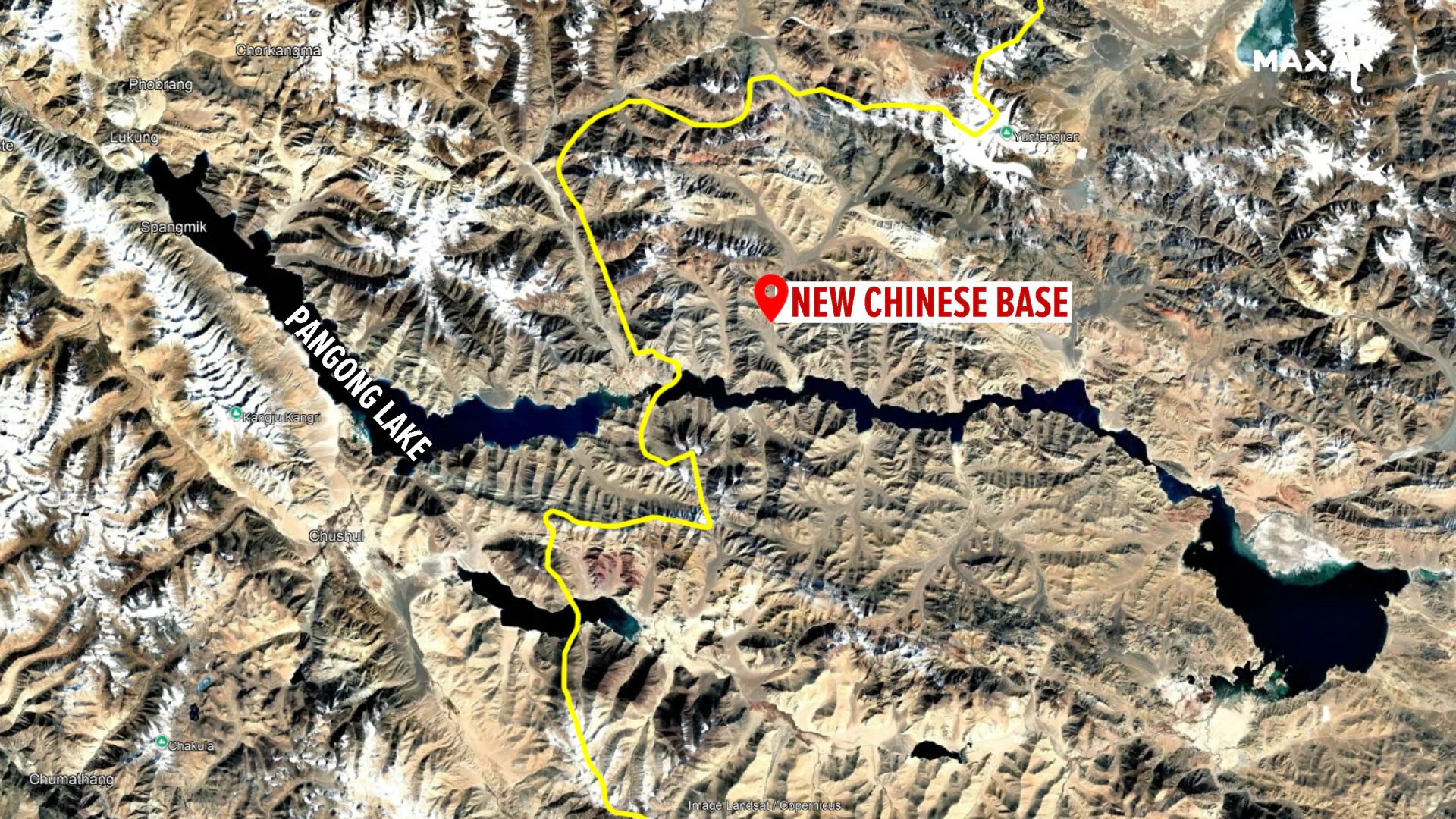Senior Indian military officials analyzing satellite imagery of a new Chinese base on the northern bank of Pangong Lake describe it as “unlike any other site” on the Chinese side of the Line of Actual Control (LAC).
Located 36 kilometers east of the LAC, the site is about 15 kilometers from a newly constructed Chinese bridge over the high-altitude Pangong Lake in Ladakh. This development reflects Beijing’s increasing efforts to exert pressure in previously unoccupied areas near the LAC.
The site features over 70 permanent structures spread across a wide area, a design choice intended to mitigate the impact of potential missile strikes. It serves two main purposes: housing soldiers and porters involved in construction activities and storing logistics for possible transfer to locations along the LAC with India. Each structure can accommodate 6-8 soldiers or hold up to 10 tonnes of supplies, including ammunition and artillery shells.
According to geospatial imagery expert Damien Symon, significant construction activity is evident, with heavy machinery, cranes, and extensive supply depots. The settlement is seeing the rise of multiple double-storey buildings, administrative offices, and town centers, alongside electrification efforts from the southern highway. Additionally, a pumping station is being constructed to ensure a reliable water supply from a nearby riverbed, suggesting that the village will be well-equipped to handle the harsh climate.
While the site was clear in April 2022, construction began in March 2024. Retired Lt. General DS Hooda, a former Northern Army Commander who led India’s surgical strikes on Pakistani territory, emphasizes that the site has dual uses. It allows China to claim it is merely enhancing civilian facilities, while in reality, the infrastructure could support military operations in a conflict.
The construction alters the status quo. Lt. General Hooda points out that Article VII of the 2005 agreement between India and China regarding boundary settlement emphasizes safeguarding the interests of settled populations in border areas. By establishing villages in contested areas previously uninhabited, China aims to bolster its claims and weaken India’s negotiating position—a strategy indicative of a long-term approach.
An NDTV report from July highlighted Chinese vehicles using the bridge across Pangong Lake, 15 kilometers from the new site. The report also identified fortified positions north of the bridge, potentially including air defense sites capable of housing surface-to-air missile batteries to protect the new base from aerial attacks.
Concerns center around the scale of construction and infrastructure near the LAC, especially with the bridge facilitating the rapid movement of forces. Retired Lt. General Satish Dua, a former Chief of the Integrated Defence Staff, notes that this dual-use village could function as a logistical hub. He stresses the need for vigilance regarding Chinese activities in the region to provide advance warnings of any malicious intentions.
Damien Symon observes that the construction patterns at this new site mirror similar developments in Chinese-held areas on the southern bank of Pangong Lake. Comparable activity has also been noted near Spanggur Lake, where another significant settlement is being built approximately 18 kilometers from Rezang La, a site of Indian strategic success during the 2020 border standoff.
The Indian Ministry of External Affairs, which received these satellite images from NDTV last week, has not specifically commented on the new Chinese construction. However, India has significantly accelerated its infrastructure development along the China border, including the construction of roads, tunnels, and military facilities to ensure rapid response capabilities against Chinese actions along the LAC.
India’s Vibrant Villages program, with an allocation of Rs 4,800 crore from 2022-23 to 2025-26, aims to develop villages along the northern border comprehensively. This initiative promotes infrastructure development, livelihood opportunities, and cultural heritage, targeting 2,967 villages. The broader strategic goal is to maintain a visible Indian presence along the border as a deterrent against territorial encroachments.
MUST READ: NASA’s Europa Clipper Launches to Explore Jupiter’s Icy Moon Habitability





